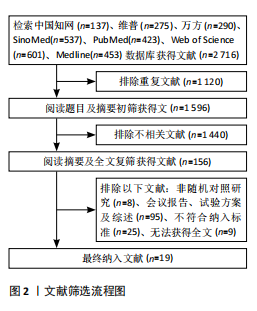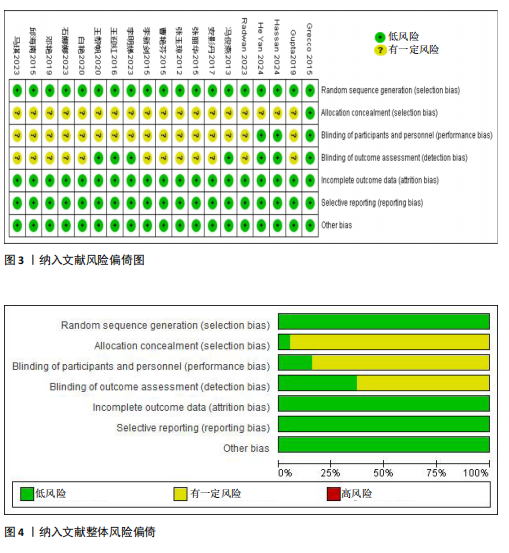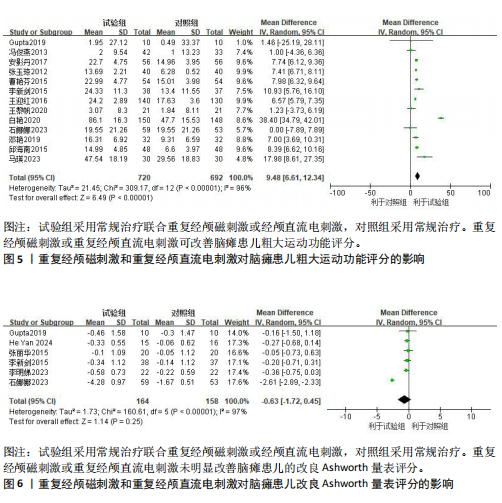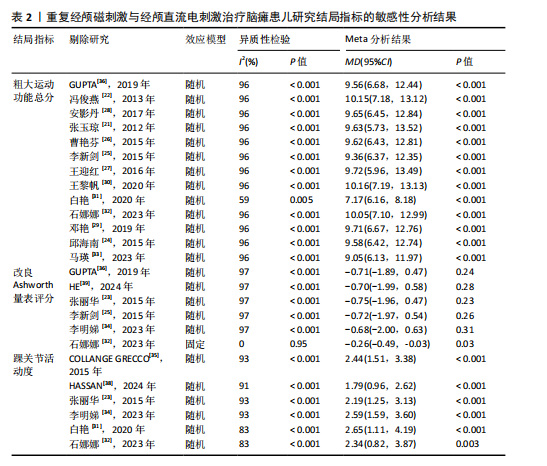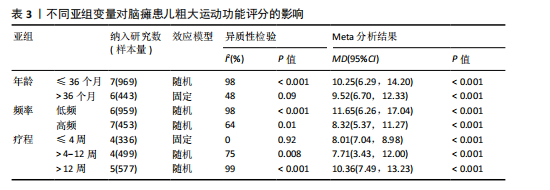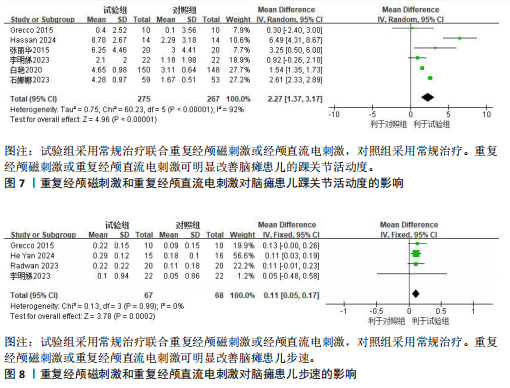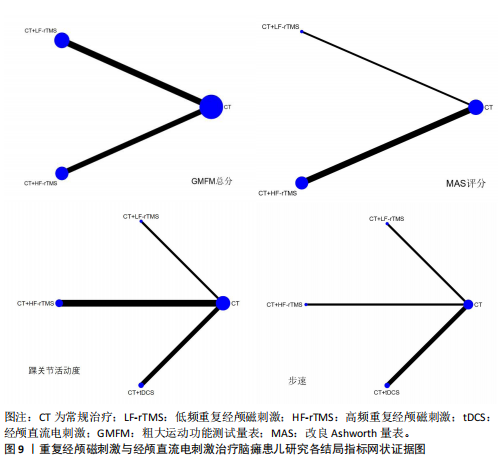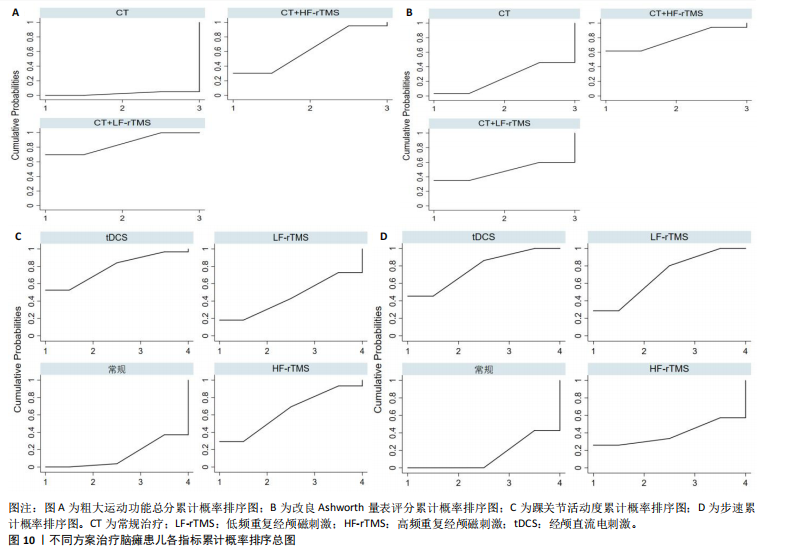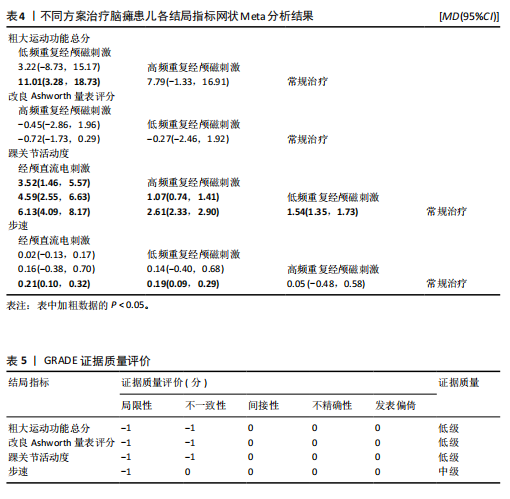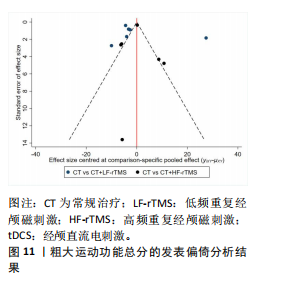[1] 中国康复医学会儿童康复专业委员会,中国残疾人康复协会,小儿脑性瘫痪康复专业委员会,等.中国脑性瘫痪康复指南(2022)第四章:康复治疗(上)[J].中华实用儿科临床杂志,2022,37(16): 1201-1229.
[2] CHAGAS PSC, LEMO AG, AYUPE KMA, et al. Functioning profile and related impairments of children and adolescents with cerebral palsy-PartiCipa Brazil preliminary results. BMC Pediatr. 2024;24(1):719.
[3] CARTON DE TA, HERMAN E, EBNER KD, et al. Hand-Arm Bimanual Intensive Therapy Including Lower Extremities in Infants With Unilateral Cerebral Palsy: A Randomized Clinical Trial. JAMA Netw Open. 2024;7(11):e2445133.
[4] 中国康复医学会儿童康复专业委员会,中国残疾人康复协会小儿脑性瘫痪康复专业委员会,中国医师协会康复医师分会儿童康复专业委员会,等.中国脑性瘫痪康复指南(2022)第一章:概论[J].中华实用儿科临床杂志,2022,37(12):887-892.
[5] LIU W, HU Y, LI J, et al. Effect of Virtual Reality on Balance Function in Children With Cerebral Palsy: A Systematic Review and Meta-analysis. Front Public Health. 2022;10:865474.
[6] CRAIG BT, KINNEY LE, HILDERLEY AJ, et al. Structural connectivity of the sensorimotor network within the non-lesioned hemisphere of children with perinatal stroke. Sci Rep. 2022;12(1):3866.
[7] NOVAK I, MORGAN C, ADDE L, et al. Early, Accurate Diagnosis and Early Intervention in Cerebral Palsy: Advances in Diagnosis and Treatment. JAMA Pediatr. 2017;171(9):919.
[8] MARKS WA, HONERCUTT J, ACOSTA F, et al. Deep brain stimulation for pediatric movement disorders. Semin Pediatric Neurol. 2009;16:90-98.
[9] LEE H, CHOI BJ, KANG N. Non-invasive brain stimulation enhances motor and cognitive performances during dual tasks in patients with Parkinson’s disease: a systematic review and meta-analysis. J Neuroeng Rehabil. 2024;21(1):205.
[10] DORUK CD, KIRKOVSKI M, CROARKIN PE. Therapeutic Applications of Noninvasive Neuromodulation in Children and Adolescents. Psychiatr Clin North Am. 2018; 41(3):465-477.
[11] ANTCZAK JM. Transcranial magnetic stimulation as a diagnostic and therapeutic tool in cerebral palsy. Postep Psychiatr Neurol. 2021;30(3):203-212.
[12] TANG L, WU Y, MA J, et al. Application of tDCS in children with cerebral palsy: A mini review. Front Pediatr. 2022;10:966650.
[13] ZHANG Q, QIU Z. Therapeutic effects of repetitive transcranial magnetic stimulation in patients with cerebral palsy: a systematic review and network meta-analysis. Neurol Sci. 2024;45(5):1953-1967.
[14] SALEEM GT, CRASTA JE,SLOMINE BS, et al. Transcranial Direct Current Stimulation in Pediatric Motor Disorders: A Systematic Review and Meta-analysis. Arch Phys Med Rehabil. 2019;100(4):724-738.
[15] ROBAINA-CASTELLANOS GR, RIESGO-RODRIGUEZ S, ROBAINA-CASTELLANOS MS.Definition and classification of cerebral palsy: a problem that has already been solved? Rev Neurol. 2007;45(2):110-117.
[16] 唐久来,秦炯,邹丽萍,等.中国脑性瘫痪康复指南(2015):第一部分[J].中国康复医学杂志,2015,30(7):747-754.
[17] NOVAK I, MORGAN C, FAHEY M, et al. State of the Evidence Traffic Lights 2019: Systematic Review of Interventions for Preventing and Treating Children with Cerebral Palsy. Curr Neurol Neurosci Rep. 2020;20(2):3.
[18] 刘津池,刘畅,华成舸.随机对照试验偏倚风险评价工具RoB2(2019修订版)解读[J].中国循证医学杂志,2021,21(6): 737-744.
[19] CUMPSTON M, LI T, PAGE MJ, et al. Updated guidance for trusted systematic reviews: a new edition of the Cochrane Handbook for Systematic Reviews of Interventions. Cochrane Database Syst Rev. 2019;10(10):ED000142.
[20] DZIRI C. Evaluation of heterogeneity in meta-analysis. Colorectal Dis. 2023;25(5): 1037-1038.
[21] 张玉琼,丁建英.经颅磁刺激对脑性瘫痪患儿粗大运动功能的影响[J].中国康复理论与实践,2012,18(6):515-517.
[22] 冯俊燕,贾飞勇,姜慧轶,等.超低频经颅磁刺激对痉挛型脑瘫患儿运动功能的影响[J].中国当代儿科杂志,2013, 15(3):187-191.
[23] 张丽华,郄淑燕,张黎明,等.重复经颅磁刺激对痉挛型脑瘫患儿痉挛及运动功能的影响[J].中国康复,2015,30(3):171-173.
[24] 邱海南.超低频经颅磁刺激结合综合康复改善脑瘫患儿粗大运动功能[J].神经损伤与功能重建,2015,10(4):364-365.
[25] 李新剑,仇爱珍,金鑫,等.重复经颅磁刺激联合康复训练治疗对促进脑瘫患儿运动功能发育与智力提高的作用[J].中国实用神经疾病杂志,2015,18(23):17-19.
[26] 曹艳芬.ILF-TMS结合针刺对脑瘫患儿粗大运动功能的疗效观察[J].热带医学杂志,2015,15(11):1507-1510.
[27] 王迎红,周正.重复经颅磁刺激对脑性瘫痪并发癫痫患儿运动功能的影响[J].中国康复理论与实践,2016,22(1):98-102.
[28] 安影丹,任战领.超低频经颅磁刺激结合脑涨落图治疗对脑瘫患儿粗大运动功能的影响[J].神经损伤与功能重建,2017, 12(5):459-460.
[29] 邓艳,曹明辉,张美萍,等.经颅磁刺激配合肌力训练改善脑瘫患儿认知和运动功能的研究[J].中国妇幼健康研究,2019, 30(1):15-18.
[30] 王黎帆,刘建军,张雁,等.重复经颅磁刺激治疗脑瘫患儿的疗效观察[J].中国康复,2020,35(2):91-94.
[31] 白艳,王秀霞,陈海英.经颅磁刺激联合核心肌力训练在痉挛型脑瘫患儿中的应用研究[J].中国全科医学,2020,23(2): 177-182.
[32] 石娜娜,闻春波,霍艳飞,等.经颅磁刺激联合乙酰谷酰胺在脑瘫患儿康复治疗中的应用效果分析[J].实用医院临床杂志,2023,20(3):67-70.
[33] 马瑛,赵明光,戴明,等.重复经颅磁刺激联合康复训练对脑性瘫痪患儿运动功能及认知功能影响研究[J]. 创伤与急危重病医学,2023,11(1):35-38,42.
[34] 李明娣,梁冠军,张大力,等.重复性经颅磁刺激联合局部振动治疗偏瘫型脑性瘫痪儿童疗效研究[J]. 康复学报, 2023,33(6):515-520.
[35] COLLANGE GRECCO LA, DE ALMEIDA CARVALHO DUARTE N, MENDONÇA ME, et al. Effects of anodal transcranial direct current stimulation combined with virtual reality for improving gait in children with spastic diparetic cerebral palsy: a pilot, randomized, controlled, double-blind, clinical trial. Clin Rehabil. 2015;29(12):1212-1223.
[36] GAPTA M, RAJAK BL, BHATIA D, et al. Effect of repetitive transcranial magnetic stimulation on motor function and spasticity in spastic cerebral palsy. Int J Biomed Eng Technol. 2019;31(4):365-374.
[37] RADWAN A, ELTALAWY HA, ABDELZIEM FH, et al. Effect of Transcranial Direct Current Stimulation versus Virtual Reality on Gait for Children with Bilateral Spastic Cerebral Palsy: A Randomized Clinical Trial. Children (Basel). 2023;10(2):222.
[38] HASSAN Z, HADIAN MR, HUSSAIN SA, et al.Comparison of the Conjunct Effects of Electrical Stimulation and Whole-Body Vibration Therapy with Transcranial Direct Current Stimulation and Whole-body Vibration Therapy on Balance and Function in Children With Spastic Cerebral Palsy. Cureus. 2024;16(6):e61511.
[39] HE Y, ZHANG Q, MA TT, et al. Effect of repetitive transcranial magnetic stimulation-assisted training on lower limb motor function in children with hemiplegic cerebral palsy. BMC Pediatr. 2024;24(1):136.
[40] BRUNONI AR, CROARKIN PE,RAZZA LB. Emerging Trends in Non-Invasive Brain Stimulation: The New Kids on the Block. Biomedicines. 2024;13(1):14.
[41] 陈桐彬,王佩佩,林晓燕,等.不同模式重复经颅磁刺激对脑卒中后认知障碍患者疗效的meta分析[J]. 中国康复医学杂志,2024,39(10):1519-1526.
[42] FACCIOLI S, CAVALAGLI A, FALOCCI N, et al.
Gait analysis patterns and rehabilitative interventions to improve gait in persons with hereditary spastic paraplegia: a systematic review and meta-analysis. Front Neurol. 2023;14:1256392.
[43] 周正荣,王红,周佳佳,等.经颅磁刺激和经颅直流电刺激治疗孤独症谱系障碍的研究进展[J].神经损伤与功能重建, 2024,19(10):605-609.
[44] MARKOWSKA A, TARNACKA B. Molecular Changes in the Ischemic Brain as Non-Invasive Brain Stimulation Targets-TMS and tDCS Mechanisms, Therapeutic Challenges, and Combination Therapies. Biomedicines. 2024;12(7):1560.
[45] CHEN SY, TSOU MH, CHEN KY, et al. Impact of repetitive transcranial magnetic stimulation on cortical activity: a systematic review and meta-analysis utilizing functional near-infrared spectroscopy evaluation. J Neuroeng Rehabil. 2024;21(1):108.
[46] PELLETIER SJ, CICCHETTI F. Cellular and molecular mechanisms of action of transcranial direct current stimulation: evidence from in vitro and in vivo models. Int J Neuropsychopharmacol. 2014;18(2):pyu047.
[47] MALEKAHMAD M, FRAZER A, ZOGHI M,et al. Transcranial pulsed current stimulation: A scoping review of the current literature on scope, nature, underlying mechanisms, and gaps. Psychophysiology. 2024;61(3):e14521.
[48] SHEN QR,HU MT, FENG W, et al. Narrative Review of Noninvasive Brain Stimulation in Stroke Rehabilitation. Med Sci Monit. 2022;28:e938298.
[49] SAFDAR A, SMITH MC, BYBIOW WD, et al. Applications of Repetitive Transcranial Magnetic Stimulation to Improve Upper Limb Motor Performance After Stroke: A Systematic Review. Neurorehabil Neural Repair. 2023;37(11-12):837-849.
[50] 柯嘉洽,邹晓佩,王春燕,等.经颅直流电刺激和经颅磁刺激在脑卒中上肢运动功能恢复的应用进展[J]. 中国神经精神疾病杂志,2021,47(1):50-55.
[51] 李国华,陆艺,王胜秋.不同频率重复经颅磁刺激治疗脑梗死后失语症的疗效[J].山东大学学报(医学版),2023,61(7):83-89.
[52] HONG A, ZHENG H, LUO J, et al. Effects of Low-Frequency Repetitive Transcranial Magnetic Stimulation on Language Recovery in Poststroke Survivors With Aphasia: An Updated Meta-analysis. Neurorehabil Neural Repair. 2021;35(8):680-691.
[53] 任露,高畅,沈小雨.重复经颅磁刺激联合脑循环治疗仪对痉挛型脑瘫患儿全身运动功能、脑血流动力学的影响[J].中国康复,2023,38(3):153-158.
[54] LONGO V, BARBATI SA, RE A, et al. Transcranial Direct Current Stimulation Enhances Neuroplasticity and Accelerates Motor Recovery in a Stroke Mouse Model. Stroke. 2022;53(5):1746-1758.
[55] HAMEED MQ, DHAMNE SC, GERSNER R, et al. Transcranial Magneticand Direct Current Stimulation in Children. Curr Neurol Neurosci Rep. 2017;17(2):11.
[56] ROUNIS E, HUANG YZ. Theta burst stimulation in humans: a need for better understanding effects of brain stimulation in health and disease. Exp Brain Res. 2020; 238(7-8):1707-1714.
[57] LONG H, WANG H, ZHAO C, et al. Effects of combining high- and low-frequency repetitive transcranial magnetic stimulation on upper limb hemiparesis in the early phase of stroke. Restor. Neurol. Neurosci. 2018;36:21-30.
[58] PETRUSEVIVIENE L, SACK AT, KUBILIUS R, et al. High-Frequency Ipsilesional versus Low-Frequency Contralesional Transcranial Magnetic Stimulation after Stroke: Differential Effects on Ipsilesional Upper Extremity Motor Recovery. Medicina (Kaunas). 2023;59(11):1955.
[59] O’LEARY GH, JENKINS DD, COKER BP, et al. From adults to pediatrics: A review noninvasive brain stimulation (NIBS) to facilitate recovery from brain injury. Prog Brain Res. 2021;264:287-322.
[60] 吴野,巩尊科,李新剑,等.不同模式经颅磁刺激对痉挛型偏瘫脑性瘫痪患儿上肢运动功能的影响[J]. 中国康复医学杂志,2019,34(11):1368-1370.
[61] ELBANNA ST, ELSHENNAWY S, AYAD MN. Noninvasive Brain Stimulation for Rehabilitation of Pediatric Motor Disorders Following Brain Injury: Systematic Review of Randomized Controlled Trials. Arch Phys Med Rehabil. 2019;100(10):1945-1963.
[62] FAN J, FU H, XIE X, et al. The effectiveness and safety of repetitive transcranial magnetic stimulation on spasticity after upper motor neuron injury: A systematic review and meta-analysis. Front Neural Circuits. 2022;16:973561.
[63] WANG L, ZHU QX, ZHONG MH, et al. Effects of corticospinal tract integrity on upper limb motor function recovery in stroke patients treated with repetitive transcranial magnetic stimulation. J Integr Neurosci. 2022;21(2):50.
[64] VALLE AC, DIONISIO K, PITSKEI NB, et al. Low and high frequency repetitive transcranial magnetic stimulation for the treatment of spasticity. Dev Med Child Neurol. 2007; 49(7):534-538.
[65] VALLINOJA J, NUEMI T, JAATELA J, et al. Functional connectivity of sensorimotor network is enhanced in spastic diplegic cerebral palsy: A multimodal study using fMRI and MEG. Clin Neurophysiol. 2024;157:4-14.
[66] AZIZI S, IRANI A, SHAHRIKHI A, et al. Contribution of altered corticospinal microstructure to gait impairment in children with cerebral palsy. Clin Neurophysiol. 2021;132(9):2211-2221.
[67] DADGAR H, MAJIDI H, AGHAEI S. Biological and Neurobiological Mechanisms of Transcranial Direct Current Stimulation. Iran J Psychiatry. 2022;17(3):350-355.
[68] BEHRANGRAD S, ZOGHI M, KIDGELL D, et al. The effects of concurrent bilateral anodal tDCS of primary motor cortex and cerebellum on corticospinal excitability: a randomized, double-blind sham-controlled study. Brain Struct Funct. 2022;227(7): 2395-2408.
[69] DUMONT AJL, CIMOLIN V, PARREIRA RB, et al. Effects of Transcranial Direct Current Stimulation Combined with Treadmill Training on Kinematics and Spatiotemporal Gait Variables in Stroke Survivors: A Randomized, Triple-Blind, Sham-Controlled Study. Brain Sci. 2022;13(1):11.
[70] CHRISTOPHER P, SUTTER EN, GAVIOLI M, et al. Safety, tolerability and feasibility of remotely-instructed home-based transcranial direct current stimulation in children with cerebral palsy. Brain Stimul. 2023;16(5):1325-1327.
|
